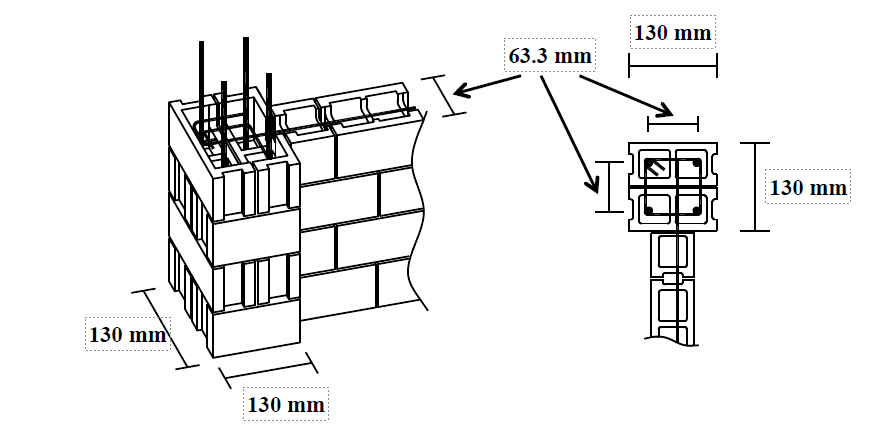1 MASc. Candidate, Department of Civil Engineering, McMaster University, Hamilton, ON, L8S 4L7, Canada, simondk@mcmaster.ca
2 Ph. D. Candidate, Department of Civil Engineering, McMaster University, Hamilton, ON, L8S 4L7, Canada, elsayemm@mcmaster.ca
3 Associate Professor, Martini, Mascarin and George Chair in Masonry Design, Co-Director, Centre for Effective Design of Structures, Department of Civil Engineering, Hamilton, ON, L8S 4L7, Canada, eldak@mcmaster.ca
4 Technical Expert, AMEC NSS, Power and Process Americas. Email: waleed.mekky@amec.com
5 Associate Professor, Joe NG/JNE Consulting Chair in Design, Construction and Management in Infrastructure Renewal, Co-Director, Centre for Effective Design of Structures, Department of Civil Engineering, Hamilton, ON, L8S 4L7, Canada, taitm@mcmaster.ca
ABSTRACT
As part of an on-going research program at McMaster University, six walls constructed utilizing 1/3 scale concrete masonry units were tested to observe their response due to out-of-plane explosive loading. Three of these walls were constructed with a unique feature; built-in masonry boundary elements producing a shear wall with end confinement. The response of these three walls is compared to three similarly reinforced walls without boundary elements subjected to the same blast loads in order to document, both quantitatively and qualitatively, the effect of the boundary elements. To conduct this comparison, the maximum deflection at the wall’s mid-height and the overall crack pattern in each trail was compared to a conventionally designed rectangular wall. It was found that the walls with masonry boundary elements behaved more like reinforced concrete slabs supported on four sides, thus responding in two-way bending, instead of the one-way bending seen in the walls with rectangular cross section. The maximum crack width sustained by the rectangular walls was always larger than those observed on the walls with boundary elements. In addition, the level of deflection was significantly less in the walls with boundary element. The maximum out-of-plane deflection at the mid-height of the walls was reduced by approximately 20 and 25% under 5 and 10 kg equivalent TNT shots, respectively.
KEYWORDS: blast loading, boundary element, experimental testing, shear walls
605.pdf



